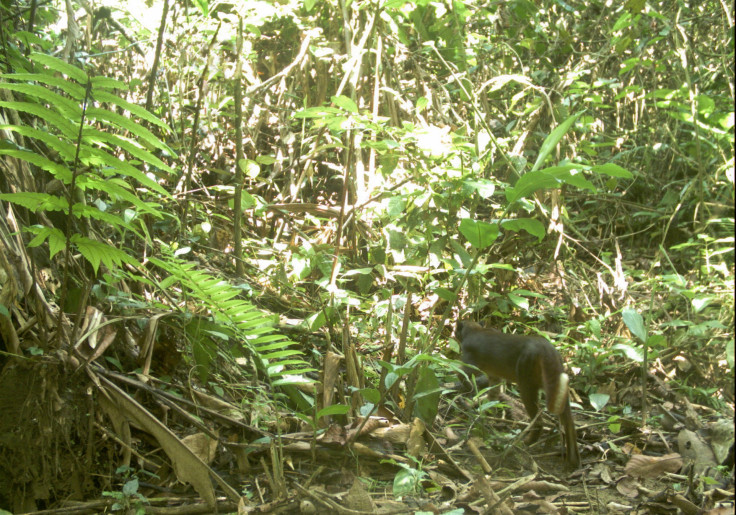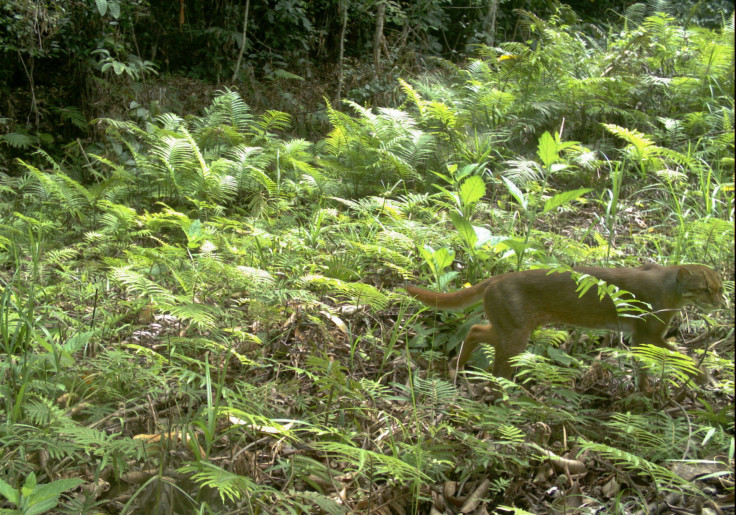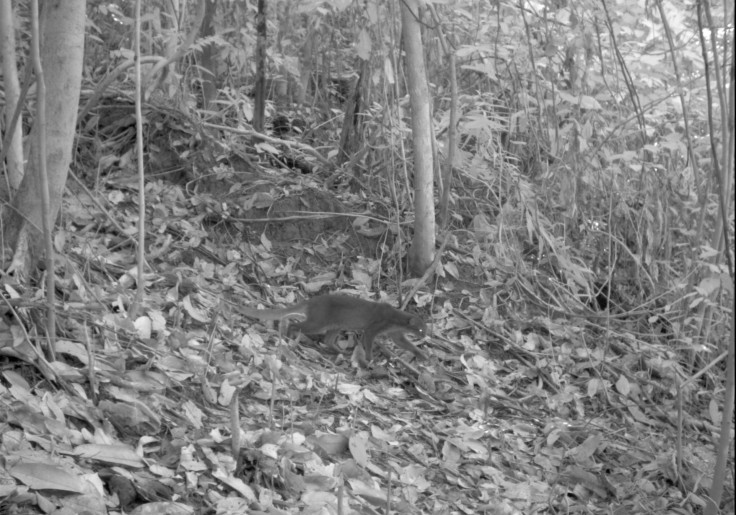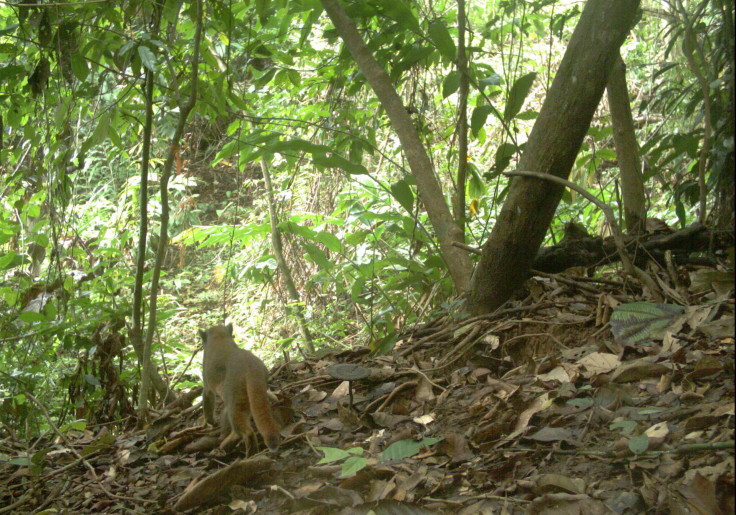Rare Bay Cat Captured On Camera In ‘Heavily Logged’ Borneo Rainforest [PHOTOS]

One of the world’s least-known cats made an appearance on the Indonesia island of Borneo, researchers announced Monday.
Images captured by hidden cameras in a Borneo rainforest document the rare bay cat slinking through a logged section of the previously unsurveyed tropical forest.
"We were completely surprised to see so many bay cats at these sites in Borneo where natural forests have been so heavily logged for the timber trade,” Dr. Robert Ewers, of the Department of Life Sciences at Imperial College London, said in a statement. “Conservationists used to assume that very few wild animals can live in logged forest, but we now know this land can be home for many endangered species.”
The bay cat, or Pardofelis badia, was first recorded in the wild in 2003. The set of new images, published on Monday in the journal PLoS One, make up the largest group of photos ever taken of the elusive cat.




“Although the area has been intensively logged over three decades, it was found to still retain the full complement of Bornean felids, including the bay cat Pardofelis badia, a poorly known Bornean endemic,” researchers wrote in PloS One.
The Borneo bay cat is considered an endangered species threatened by habitat loss from commercial logging and oil palm plantations, according to the International Union for Conservation of Nature and Natural Resources. Recent estimates predict the wildcat species, which is dependent on forest cover, will plummet since its habitat is expected to fall from 50 percent to less than one-third by 2020.
Between May and December 2011, the cameras also caught images of four other wildcat species, including the Sunda clouded leopard, the leopard cat, the flat-headed cat and the marbled cat -- suggesting that a number of rare, endangered species may be able to survive in logged areas.
"Our results suggest that the large areas of highly disturbed natural forest in the region could play a greater role in the conservation of wild felids than is currently recognized," Ewers and colleagues wrote in PLoS One.
Conservationists will need to continue to study the effects of logging on wildlife populations to fully understand how the rare cats survive, but they remain grateful for what the cameras have captured.
"The cameras record multiple sightings, sometimes of species which we might be very lucky to see even after spending years in an area,” Imperial College London Ph.D. researcher Oliver Wearn said. “For example, I've seen the clouded leopard just twice in three years of fieldwork, whilst my cameras recorded 14 video sequences of this enigmatic cat in just eight months."
© Copyright IBTimes 2024. All rights reserved.






















